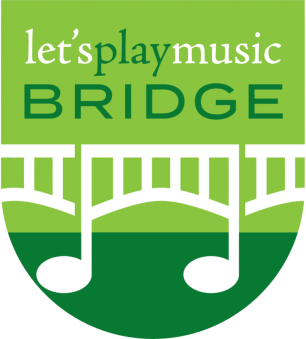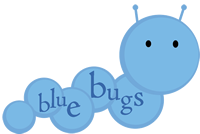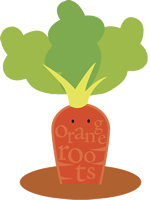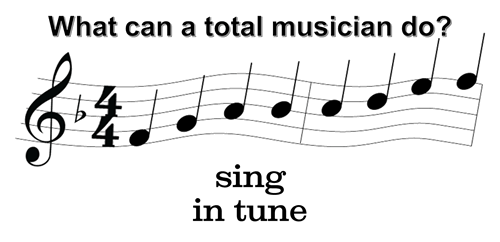|
Here you can find all the information for the classes each week!
|
Yellow Arrows #8
Thursday, February 27, 2025 | Yellow Arrows Lessons

Lesson #8

Parents come next week, tuition is due, and it's SPIRIT MONTH! (See separate email with details.)
1st Year Registration & Enrollment
If you have a child you want to go through 1st year and aren't on my waiting list, or you know someone who wants to do Let's Play Music, email back and let me know their name and email address so they can get registered ASAP. After next week I'll open registration up to the general public.
Enrollment for next fall begins this SATURDAY at NOON!
Please go to https://musikandme.com/Registration-LPM-return for instructions of how to enroll your student and purchase their 3rd year materials. There is a $20 registration fee, but you won't need to pay it if you register by March 28th! (You can earn 10 extra tickets by registering before March 15th!) My 3rd Year classes will be Thursdays at 4:00pm and 5:30pm. Please let me know if these times won't work for you and we'll discuss solutions. I can possibly adjust this if necessary, but please register as soon as you can.
Celebrate Connection
A few ideas to bring playfulness to practice time!
-
Alpha-frogger:
Pretend each alphabet foam piece is a tiny frog. Have your child choose an alphabet frog, then hop it across the keyboard helping froggie find all keys of that letter. These frogs don't croak- each time the "frog" lands on one of her special lily pads, sing the letter (on pitch!).
-
Hiss:
Place one letter on the keyboard as a starter snake. Each player takes turns drawing a letter and checking to see if they can add it to the head or the tail with baby steps to make the snake longer. If not, start a new snake somewhere else on the keyboard. Anytime someone makes a snake with 8 or more segments, they get to remove it from the keyboard and keep the points (1 per segment)! Play until the pieces run out. It's pretty cool if you are able to join 2 snakes by drawing the missing link between them, and win a really long snake! You might enjoy non-piano Hiss, too.
-
Silly Songs:
Have your child draw out 5-10 alphabet notes and line them up along the music stand. With her right hand in C position, play each note with the finger touching that key. If the note is a B, slide the thumb down to yellow position to reach it; if the note is an A, slide the hand into blue position to reach it. This might be a wacky song, or it might be something cool. If you like the tune, play it again!

Oh, When the Saints & Lullaby and Goodnight
D-O-W-N and that’s the DOWN-BEAT! The downbeat is the strong beat that tells us when to begin playing a song. Sometimes the downbeat is on the first word of a song, sometimes it is not. Ask your child what word the DOWNBEAT is on in both of these songs!
Tinga Layo:
Our toe-tapping donkey, dances a shaky, stylized rhythm called CALYPSO. See if you can hear this fun rhythm while singing along!
I am Robin Hood
It’s duet time! While your child plays the melody, you or a sibling can clap or pat drumbeats on lap in a repeated slug pattern. Then switch! Once your child is confidant playing the melody by themselves, invite them to pat their own leg while playing. Impressive harmony!

When listening to Don't Put Your Trash encourage your child to do the actions to the part he hears during the harmony. It is also creative to change up the lyrics especially when encouraging chores: Don't put your SOCKS (insert any noun) in my BEDROOM (insert any place) my bedroom's full!
Here is a link to all the skills videos as well as the link to be able to purchase a class video to make up for a missed class. (tap or scan)
Have a musical day!
-Ms. Bethany :)
SPIRIT MONTH!
Wednesday, February 26, 2025 | Uncategorized
|
Look what I just added as a drawing prize!
Enter by playing BINGO, hosting a yard sign, and/or registering for classes next year! |
Pink Piggies #8
Wednesday, February 26, 2025 | Pink Piggies Lessons
Lesson #8

Sound Beginnings curriculum consists primarily of American folk songs and chants, nostalgic songs, nursery rhymes, and well-known classical pieces. You likely recognized a few of the songs or rhymes on our album!
Next week we'll sing these songs in class:
- Ten Little Pennies
- Hey! Hey! Look At Me!
- DO Pentatonic Scale
- My Little Rooster
- To Market
- Zoodeo
- Count Your Blessings
Tuition is due next week, and March is SPIRIT MONTH! We'll have lots of prizes you can win by showing your class spirit! (See the separate email with details.)
1st Year Registration & Enrollment
If you have a child you want to go through 1st year and aren't on my waiting list, or you know someone who wants to do Let's Play Music, email back and let me know their name and email address so they can get registered ASAP. After next week I'll open registration up to the general public.
Enrollment for next fall begins this SATURDAY at NOON! There is a $20 registration fee, but you won't need to pay it if you register by March 28th! (You can earn 10 extra tickets for the Spirit Month drawing by registering before March 15th!)

Folk music is rich in history and became an informal way to pass on traditions, commemorate personal or communal events, and bond communities. Because it originated with common folk, untrained in the musical arts, it’s melodies are easy to learn and sing. By incorporating folk music into the curriculum, Sound Beginnings is keeping tradition alive and helping preserve the stories of those that came before us. It is believed that the tradition of reciting nursery rhymes began for similar reasons, an oral tradition meant to preserve and pass on stories. Our use of them in class promotes listening to speech patterns, understanding rhyming words, increased vocabulary, and preparation for further literacy skills.
Optional home fun activity: Color the ‘Ballet of the Unhatched Chicks’ on page 16
(Remember, these activities are optional but can be a great bonding experience to do with your child during the week.)
While this isn't actually one of our semester instruments, I think this is a very fun video of playing rocks. Yes, I said rocks. The instrument is called a Lithophone and it is similar to the xylophone, but made from rocks, rather than wood! If you would like to see the difference between other barred percussion instruments, here's a link to some good info!
Have a musical day!
-Ms. Bethany :)
Orange Roots #8
Tuesday, February 25, 2025 | Orange Roots Lessons
Lesson #8
Parents come next week, tuition is due, and it's SPIRIT MONTH! (See separate email with details.)
1st Year Registration & Enrollment:
If you have a child you want to go through 1st year and aren't on my waiting list, or you know someone who wants to do Let's Play Music, email back and let me know their name and email address so they can get registered ASAP. After next week I'll open registration up to the general public.
Thank you for sending the Marco Polo videos this week. It really helps us get through more fun things in class when we don't need to take the time for each student to play their song during class.
We started working on the A minor scale and cadences this week! The best part about A minor is that the scale feels just like playing a C Major scale, with no sharps or flats! We did have to change our solfege words though. A minor scale is DO, RE, ME (pronounced "may"), FA, SOL, LE (pronounced "lay"), TE (pronounced "tay"), DO. Our cadences are almost the same, but when we play the yellow chord, we do have to remember to play the G#!
Our dictation exercise was different today. We had all the same notes, but we had to listen to the rhythm and write the rhythm we heard. We also practiced drawing a bass clef, which is also called the "F clef" because the big dot is on the F line and the two dots are on both sides of the F line.
Next week we will do Showtime as a class with New World Symphony. Have your child practice the part they want to play in class and we'll all play our parts at the same time to make a beautiful ensemble!
Students should now have all orange rhythm flashcards unbanded so they can practice all 16 cards! They can also use Quizlet from my website to practice the same things!
Optional: if you'd like to have your student practice more rhythms in a super fun way, you can print off the orange counting cards. They are in the student portal (www.musikandme.com) in the online resources section. There are 3 sets with 2 pages each. You can print them front-to-back and you'll have the same rhythms with bugs to help on one side and no bugs on the other side!
Russian Sailor Dance
This song is ALWAYS a student favorite. Another great repertoire piece that reinforces ABA form, improvisations, and provides a study in legato and staccato themes. But it's the the accelerando at the end that will have your student BEGGING to practice it all the time!
 Bridge is a really fun class for Let's Play Music graduates that is a great "bridge" between Let's Play Music classes and private lessons. I will be starting a new Bridge class next year, teaching it as a 2-year program. The kids will learn lots of new songs, scales, musical concepts, and so much more! It is more self-paced than LPM, so it's perfect for if you feel like your child has missed out on some musical concepts or skills in Orange Roots. If you are interested, let me know and I'll get you more information.
Bridge is a really fun class for Let's Play Music graduates that is a great "bridge" between Let's Play Music classes and private lessons. I will be starting a new Bridge class next year, teaching it as a 2-year program. The kids will learn lots of new songs, scales, musical concepts, and so much more! It is more self-paced than LPM, so it's perfect for if you feel like your child has missed out on some musical concepts or skills in Orange Roots. If you are interested, let me know and I'll get you more information.
Here is a link to all the skills videos as well as the link to be able to purchase a class video to make up for a missed class. (tap or scan)
Have a musical day!
-Ms. Bethany :)
Blue Bugs #8
Tuesday, February 25, 2025 | Blue Bugs Lessons

Lesson #8
Parents come next week, tuition is due, and it's SPIRIT MONTH! (See separate email with details.)
1st Year Registration & Enrollment
If you have a child you want to go through 1st year and aren't on my waiting list, or you know someone who wants to do Let's Play Music, email back and let me know their name and email address so they can get registered ASAP. After next week I'll open registration up to the general public.
Enrollment for next fall begins this SATURDAY at NOON!
Please go to https://musikandme.com/Registration-LPM-return for instructions of how to enroll your student and purchase their 2nd year materials. There is a $20 registration fee, but you won't need to pay it if you register by March 28th! (You can earn 10 extra tickets by registering before March 15th!) My 2nd Year class will be Tuesdays at 5:30pm. Please let me know if this time won't work for you and we'll discuss solutions. I can possibly adjust this if necessary, but please register as soon as you can.
Are You Sleeping?
This song reinforces the solfege hand signs. Very soon we’ll sing in a round, letting us hear multiple layers of music. Hearing music in our head and being able to stay on the part we are singing is a great skill for musicians to learn.
B-I-N-G-O
Who knew BINGO had such music concepts to learn from? When we sing it, we feel the quiet internal beats and learn to anticipate when to clap. It's full of rich musical concepts.
Chords in Pieces - auditation (hear in your head)
As we sang “Chords in Pieces” we left out some of the chords and auditated them in our heads instead of singing them aloud. Again, much of the learning in 1st year is subconscious and unseen. The musical development that is happening to your little musician right now won't be seen by the naked eye, but will be harvested down the road!
Bug Rhythms
We mixed up the order of the bugs and with no verbal cues we sang and clapped the bug rhythms. Your amazing kiddos were able to do “Can’t Bug Me” perfectly! Wow, they are learning so quickly.
It is easy to underestimate the significance of solfege. It helps us label something abstract like notes, uses whole body involvement, helps us understand scales and key signatures, aids in learning about intervals, helps us sight read/sing music, and so much more! Click here to read about the many reasons why we use solfege in Let's Play Music!
Here is a link to all the skills videos as well as the link to be able to purchase a class video to make up for a missed class. (tap or scan)
Have a musical day!
-Ms. Bethany :)











